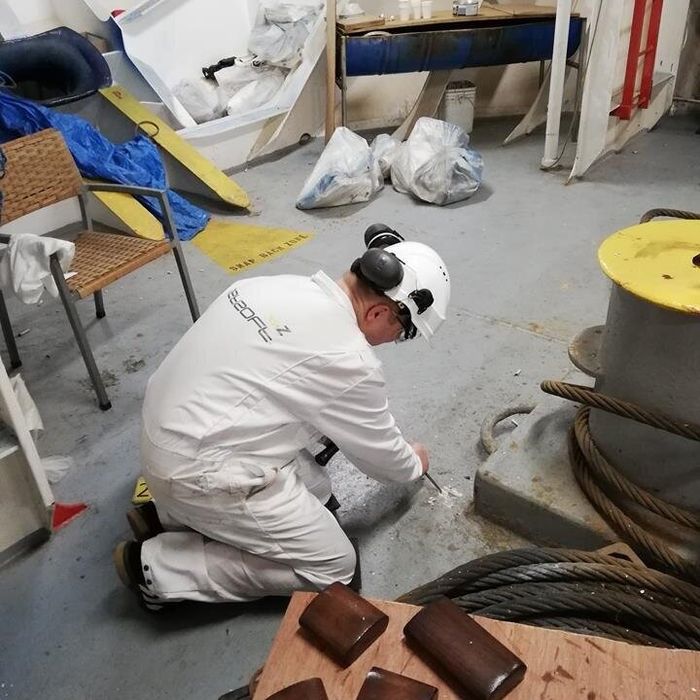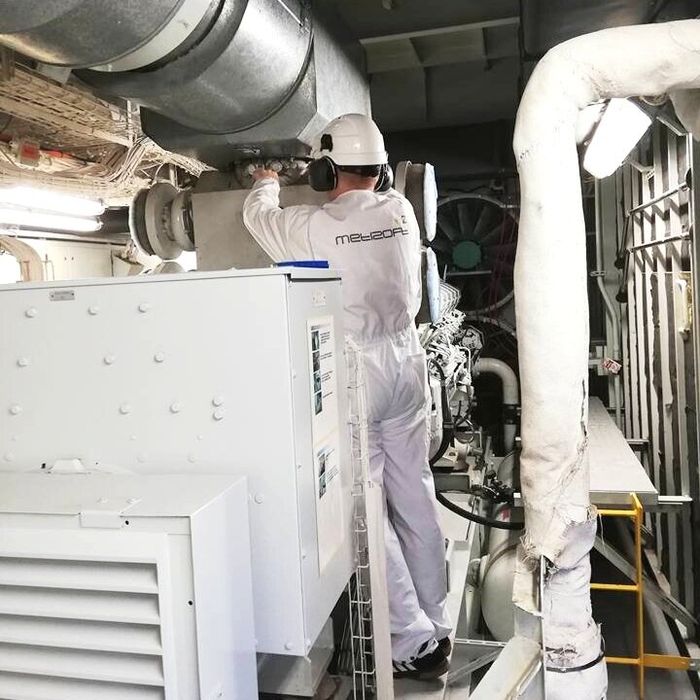Monitoring hazardous material levels on board ships
Metizoft inspects and monitors ships for hazardous materials. How did it all start and why is this important to both human beings and the environment?
Guidelines for inventory of hazardous materials
It started with the adoption of the Resolution A.962(23) IMO Guidelines on Ship Recycling on December 5th, 2003. The resolution aimed to give advice to all stakeholders in the recycling process, including administrations of ship building and maritime equipment supplying countries, flag states, port states and recycling states, as well as intergovernmental organizations and commercial bodies such as shipowners, ship builders, repairers and recycling yards.
The guidelines introduced the concept of “Green Passport”, a document containing an inventory of all materials potentially hazardous to human health and the environment.
The ship recycling legislation is a dynamic set of rules, and the A.962(23) resolution was replaced by the “International Convention for the Safe and Environmentally Sound Recycling of Ships” – the Hong Kong Convention – in the spring of 2009. The conference that created the convention was attended by 63 countries and overseen by IMO, though it has as of 2019 not yet been ratified. For the Hong Kong Convention to become effective, 15 ratifications, representing 40% of the world merchant shipping by gross tonnage, and on average 3% of recycling tonnage for the previous 10 years, are required.
The Hong Kong Convention has been ratified by Belgium, Denmark, France, Norway, Panama, Holland, India, Turkey, Germany, Japan, Malta and the Republic of the Congo to date, while Italy and Saint Kitts and Nevis are in the process.
The Hong Kong Convention introduced the term “Inventory of Hazardous Materials” – IHM – which replaced the “Green Passport” term.
“Metizoft has produced and updated Green Passports and IHMs since its founding in 2006.”
List of substances
On December 30th, 2013, the new EU Ship Recycling Regulation (EU SRR) entered into force, a regulation that builds on the Hong Kong Convention (HKC). The EU SRR includes all the hazardous materials listed in the HKC – such as asbestos, PCBs, TBT and CFCs – as well as an additional two substances: PFOS and HBCDD. Some substances have no threshold level, such as asbestos, PCBs, Ozone depleting substances such as CFCs and anti-fouling systems containing organotin compounds as a biocide. Other substances, such as lead, mercury, PBB, PFOS and HBCDD, have a threshold level.
All border-crossing, commercial ships flying the EU flag or calling at EU ports above 500 gross tonnage (GT) are required to have an updated IHM on board.
The EMSA’s Best Practice Guidance on the Inventory of Hazardous Materials published June 5th, 2018 is the most recent guideline that provides the current substance list to be monitored in the IHM. It also provides latest best practice guidance to the development and updating of IHM in accordance with the EU Ship Recycling Regulation.

Health and safety
With a continuously updated IHM, shipowners will contribute to increased safety for their crew members in addition to safe recycling of ships. A ship’s IHM enables ship recyclers to plan safe removal of hazardous materials, reducing harm to both workers dismantling ships, as well as the environment.
Asbestos is the most common hazardous material on board ships, and generally exists in insulation, gaskets, brake linings, pipe lagging and other similar items. Over decades, trapped asbestos fibers can cause inflammation, scarring and eventually genetic damage. Asbestos also causes different forms of cancer as well as progressive lung disease.
Though the EU Commission has issued technical guidelines for safety and environmental requirements for ship recycling, regrettably, the fact is that most ships today are recycled in South East Asia using the so-called “beaching method”*. This causes many injuries and deaths to people, both adults and children, working under terrible conditions. Hazardous materials are also leaking directly into the soil, causing harm to the surrounding environment.
To be compliant
Newbuilds have been required to have an updated IHM on board since 2018. By the end of 2020, all existing ships that are affected by the EU SRR are required to have an updated IHM on board. Ships lacking IHM are required by law to have an IHM inspection by certified personnel before producing an IHM.
“From 31 December 2020, ships above 500 GT flying the flag of an EU/EEA member state, or third-party flagged vessels calling at European ports, must carry an IHM (Inventory of Hazardous Materials) certification on board.”
Once an IHM report has been compiled, the legislation requires it to be continuously updated throughout a ship’s life cycle. Certified HazMat Experts maintains IHM, tracking hazardous materials entering ships and identifying products in their supply chain containing or potentially containing hazardous materials. SDoC (Suppliers Declaration of Conformity for Material Declaration Management) and MD (Material Declaration) documentation is filled out and continuously added to the IHM. HazMat Experts are certified by class companies such as DNV GL and ABS.
*Metizoft is not responsible for the content of external websites.

ABOUT METIZOFT
Gry Cecilie Sydhagen founded Metizoft AS in 2006 with an ambition to make the maritime industry greener. In 2009, Sydhagen was honoured as the «Norwegian Female Entrepreneur of the Year» for her effort in developing green technology solutions.
Metizoft is among the world’s first and leading consulting companies providing turnkey Green Passport / IHM (Inventory of Hazardous Materials) solutions to shipyards, shipowners, suppliers, and other business segments in the maritime industry. With a broad variety of clients worldwide, Metizoft has some of the most advanced vessels within the maritime industry in their portfolio.
Metizoft operates out of Norway, Singapore and Shanghai, China, also having an extensive network of IHM inspectors, operating out of strategic ports on all continents. More than 50 employees go to work every day at our offices to provide sustainable solutions for the entire ship lifecycle.'
Last updated Mar 08, 2023